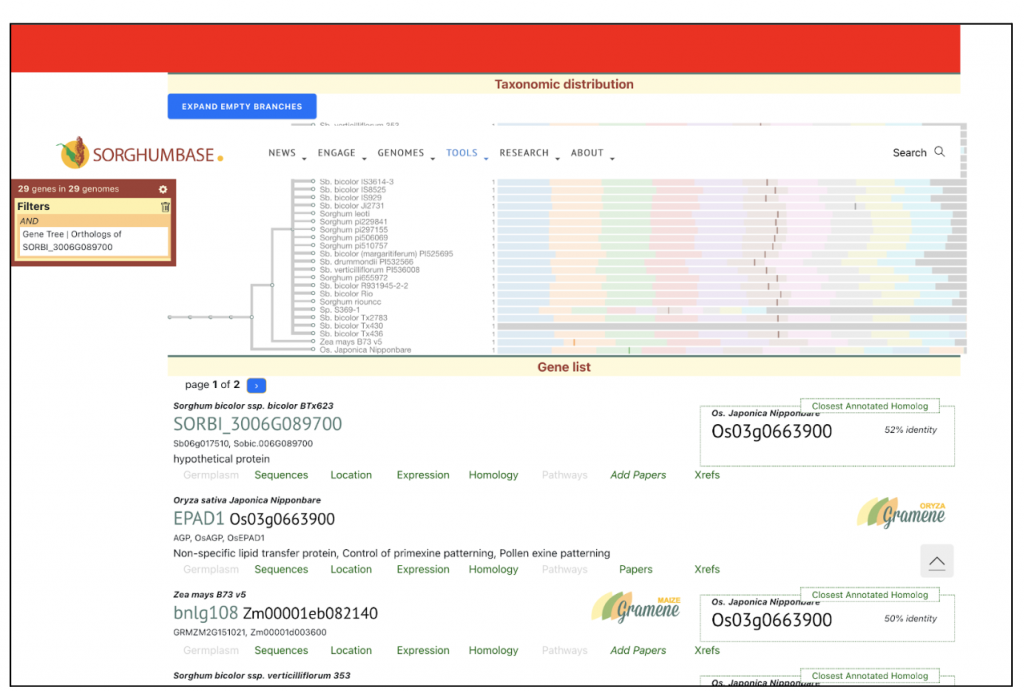Pollen serve as the reproductive units in seed producing terrestrial plants, containing parental genetic material protected by a robust outer wall. The pollen wall is a multi-layered structure that varies across species, contributing to pollination and taxonomic classification. The wall’s surface is shaped by sporopollenin, a highly resistant material, and though the specific mechanisms behind surface pattern diversity remain largely unknown, the development process of pollen walls is highly conserved across land plants.
Pollen exine, the durable outer layer, has a conserved internal structure across Poaceae but varies in surface ornamentation. This surface diversity plays a critical role in pollination and fertilization by aiding species-specific recognition and is positively correlated with species richness at the subfamily level. There is ongoing debate about whether key factors involved in its formation are equally conserved among different Poaceae species. EPAD1, a gene specific to Poaceae, along with its orthologs, plays a conserved role in pollen wall formation in wheat and rice, but appears to have minimal function in maize. To further investigate the conserved function of EPAD1 in Poaceae, researchers from Shanghai Jiao Tong University, Shanghai in China analyzed four EPAD1 orthologs from two distinct sub-clades within the family. This included two functionally redundant barley genes (HvEPAD1 and HvEPAD2) from the BOP clade and single copies of EPAD1 in sorghum (SbEPAD1) and millet (SiEPAD1) from the PACMAD clade. CRISPR-Cas9-generated mutants revealed defective pollen wall formation, consistent with previous studies in rice and wheat. Notably, in barley, the hvepad2 single mutant also exhibited apical spikelet abortion, corresponding with reduced expression levels of HvEPAD1 and HvEPAD2 from the apical to the basal regions of the spike.
SorghumBase examples:
An example gene mentioned in the study, SbEPAD1 (SORBI_3006G089700) is an ortholog of the EPAD1 gene in sorghum, belonging to the Poaceae family. EPAD1 genes are known for their crucial role in the formation of pollen exine patterns, a key component of the pollen wall that protects against physical damage and ensures successful pollination. In sorghum, SbEPAD1 has been found to be essential for maintaining the integrity of the primexine, a matrix crucial for guiding the formation and polymerization of sporopollenin precursors, which are key to the structure of the pollen exine. In studies using CRISPR-Cas9 technology, mutations in SbEPAD1 led to defects in the pollen exine structure, confirming its role similar to other EPAD1 orthologs in rice, wheat, and barley. These mutations resulted in irregularities in pollen wall formation, demonstrating that despite variations across species in the Poaceae family, the function of EPAD1 genes remains conserved, particularly in the formation and patterning of pollen exine
In the context of this paper, SbEPAD1’s role is further emphasized through comparative analysis across sorghum and other crops within the Poaceae family. The study validates the gene’s conserved function in maintaining pollen wall integrity, showing that disruptions in SbEPAD1 can lead to sterility due to compromised pollen structure. This highlights its significance in crop improvement and breeding programs aimed at enhancing sorghum’s reproductive success.

Reference:
Li H, Hua M, Tariq N, Li X, Zhang Y, Zhang D, Liang W. EPAD1 Orthologs Play a Conserved Role in Pollen Exine Patterning. Int J Mol Sci. 2024 Aug 16;25(16):8914. PMID: 39201600. doi: 10.3390/ijms25168914. Read more